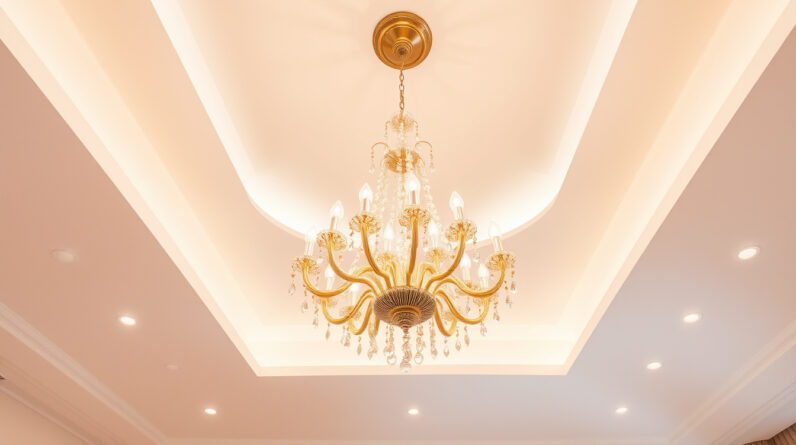In today’s fast-paced world, maintaining a comfortable home while keeping energy costs in check is more important than ever. One of the most effective ways to achieve this is through proper insulation. By understanding and applying insulation tips, homeowners can significantly enhance their home’s energy efficiency and overall comfort. Whether you’re building anew or upgrading an existing home, this comprehensive guide will walk you through the essential insulation strategies you need to know.
Why Insulation Is Essential for a Comfortable and Energy-Efficient Home
Insulation acts as a thermal barrier, reducing heat transfer between the inside of your home and the outside environment. During colder months, good insulation keeps warmth in, lowering heating bills. Conversely, in the summer, it helps keep your home cool by preventing external heat from penetrating your living spaces. Moreover, insulation plays a vital role in noise reduction, pest prevention, and maintaining overall indoor air quality.
Improper or inadequate insulation leads to energy loss, increased utility bills, and an uncomfortable living environment. According to the U.S. Department of Energy, well-insulated homes can save homeowners up to 20% on their energy bills (source). Therefore, investing in proper insulation is a smart move, both economically and environmentally.
Top Insulation Tips to Enhance Home Energy Efficiency
1. Identify and Address Heat Loss Areas
The first step in making your home more energy-efficient with insulation is to identify where heat is escaping. Common areas include:
- Attic and roof spaces
- Walls (especially exterior walls)
- Basements and crawl spaces
- Windows and doors
- Garage doors
Conducting a simple audit or hiring a professional can reveal weak spots. Sealing leaks around windows, doors, and other penetrations also complements insulation efforts.
2. Upgrade Your Attic Insulation
Since a significant amount of heat can escape through the attic, ensuring it is properly insulated is critical. Use insulation materials such as fiberglass batts, blown-in cellulose, or spray foam to increase R-value—the measure of thermal resistance. For optimal results, aim for an R-value of 49–60 in attic insulation, depending on your climate zone.
3. Insulate Walls Effectively
While insulating walls can be more challenging in existing homes, there are effective methods such as blow-in insulation for walls, foam board applications, or retrofit wall insulation. In new constructions, incorporate high-quality insulation into wall cavities to maximize energy savings.
4. Seal Air Leaks Before Insulating
Insulation is not a standalone solution. Air leaks can undermine insulation’s effectiveness. Use caulk, spray foam, or weatherstripping to seal gaps around windows, doors, electrical outlets, and pipes. This combined approach improves overall energy efficiency and comfort.
5. Choose the Right Insulation Material
Different insulation types offer unique benefits. Consider factors such as R-value, moisture resistance, fire safety, and ease of installation. Common options include:
- Fiberglass batts and rolls
- Loose-fill cellulose and fiberglass
- Spray foam (closed-cell and open-cell)
- Mineral wool or rock wool
Assess your needs and budget, and consult with insulation professionals if necessary.
6. Insulate Windows and Doors
While insulation can’t seal your windows and doors alone, adding weatherstripping, thermal curtains, or shrink film insulation can help prevent drafts and heat loss. Upgrading to energy-efficient windows also contributes to insulation efforts.
7. Insulate Foundations and Basements
Basements and crawl spaces are responsible for considerable heat transfer. Insulate foundation walls and floors with foam board or spray foam insulation to reduce heat loss through these areas.
Additional Tips for Maximizing Insulation Effectiveness
- Maintain your insulation: Periodically check for compressed or damaged insulation and replace it as needed.
- Combine insulation with ventilation: Proper attic ventilation prevents moisture buildup, which can compromise insulation’s effectiveness.
- Consider eco-friendly options: Insulation made from recycled materials, like cellulose, or environmentally friendly options like wool, can be beneficial.
Easy-to-Follow Insulation Implementation Checklist
Here’s a quick summary of steps to improve your home’s insulation:
- Conduct a home energy audit to identify gaps.
- Seal all air leaks around windows, doors, and penetrations.
- Add or upgrade insulation in the attic.
- Insulate exterior walls using suitable methods.
- Insulate basement and crawl space walls.
- Upgrade windows or add weatherstripping.
- Regularly inspect and maintain insulation.
Frequently Asked Questions about Insulation
Q1: What is the best type of insulation for energy efficiency?
A: The best insulation depends on your specific needs, budget, and home structure. Generally, spray foam offers high R-values and air sealing benefits, while fiberglass and cellulose are cost-effective options for attic and wall insulation.
Q2: How do I know if my home needs more insulation?
A: If your energy bills are unexpectedly high or if you can feel drafts or cold spots, your home may be under-insulated. An energy audit or professional inspection can provide definitive answers.
Q3: Can insulation improve indoor air quality?
A: Yes. Proper insulation minimizes drafts and reduces the entry of outdoor pollutants, improving indoor air quality. Additionally, some insulation materials are hypoallergenic and mold-resistant.
Enhance Your Home’s Comfort and Save Money Today
Investing in insulation is an effective and sustainable way to boost your home’s energy efficiency and comfort. Properly insulated homes not only reduce heating and cooling costs but also create a more consistent indoor environment, free from drafts and temperature fluctuations. As energy prices continue to rise, taking proactive steps with your home’s insulation system becomes more vital than ever.
Don’t wait for energy bills to soar or discomfort to set in. Start with an insulation assessment today and implement these tips to enjoy a warmer, more comfortable, and energy-efficient home. For personalized advice and professional installation, consult reputable insulation contractors—your home’s comfort and your wallet will thank you.
Take action now! Prioritize your home’s insulation and watch your energy bills drop while comfort levels soar. Your smarter, more efficient home journey begins here.








